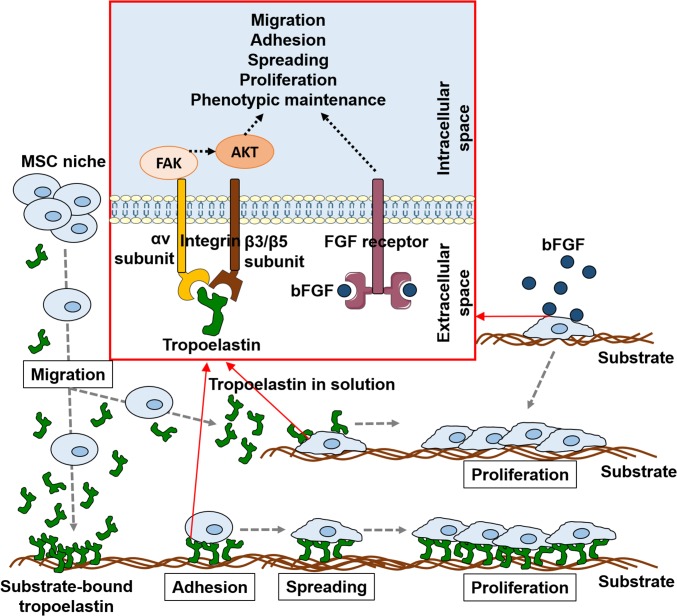Fig. 6.
Model of tropoelastin modulation of MSC behavior. Substrate-bound or soluble tropoelastin attracts MSCs to migrate toward it. MSCs adhere and spread to the tropoelastin substrate, which triggers rapid cell expansion while simultaneously preserving MSC surface marker expression and trilineage differentiation potential. Unlike the majority of anchorage-dependent matrix proteins, tropoelastin in its soluble form likewise promotes MSC proliferation and phenotypic maintenance. These signals from tropoelastin are conveyed via cell surface integrin receptors, specifically αvβ3 and αvβ5, and propagated via FAK and PKB/AKT to induce potent motogenic and mitogenic MSC responses that mirror those of soluble growth factors such as bFGF.

